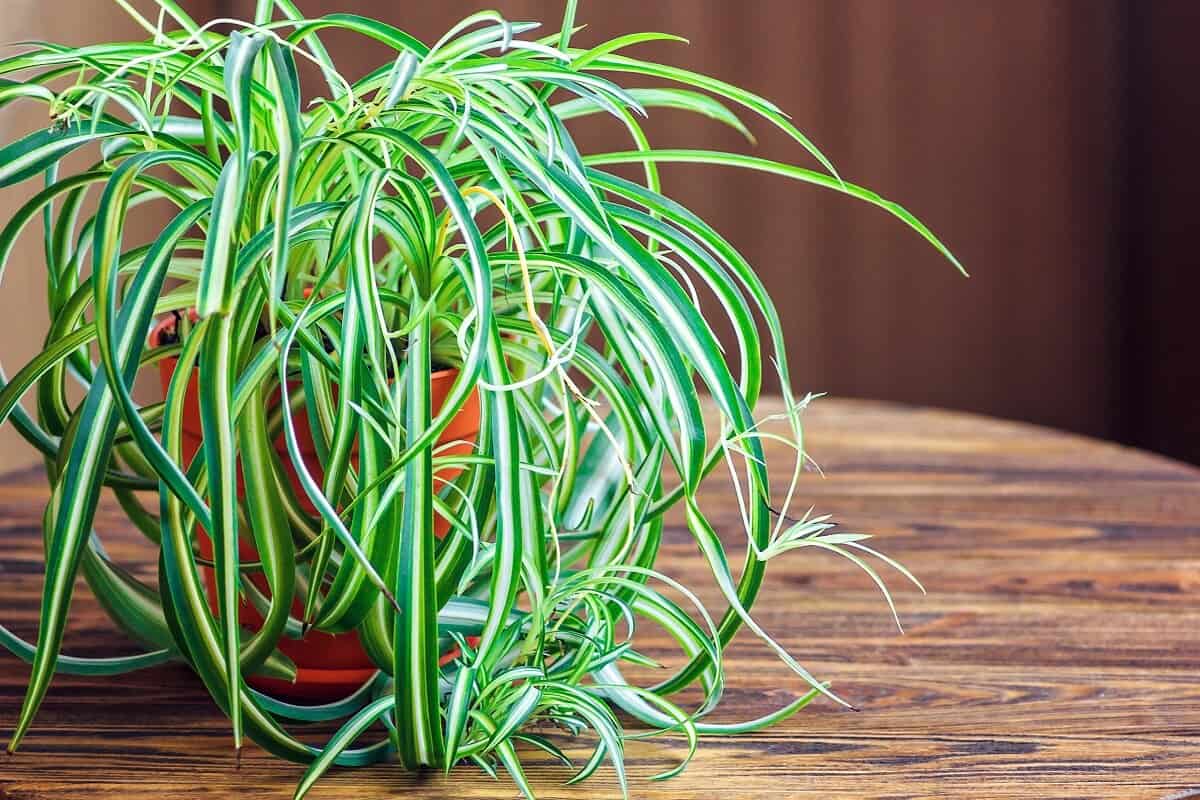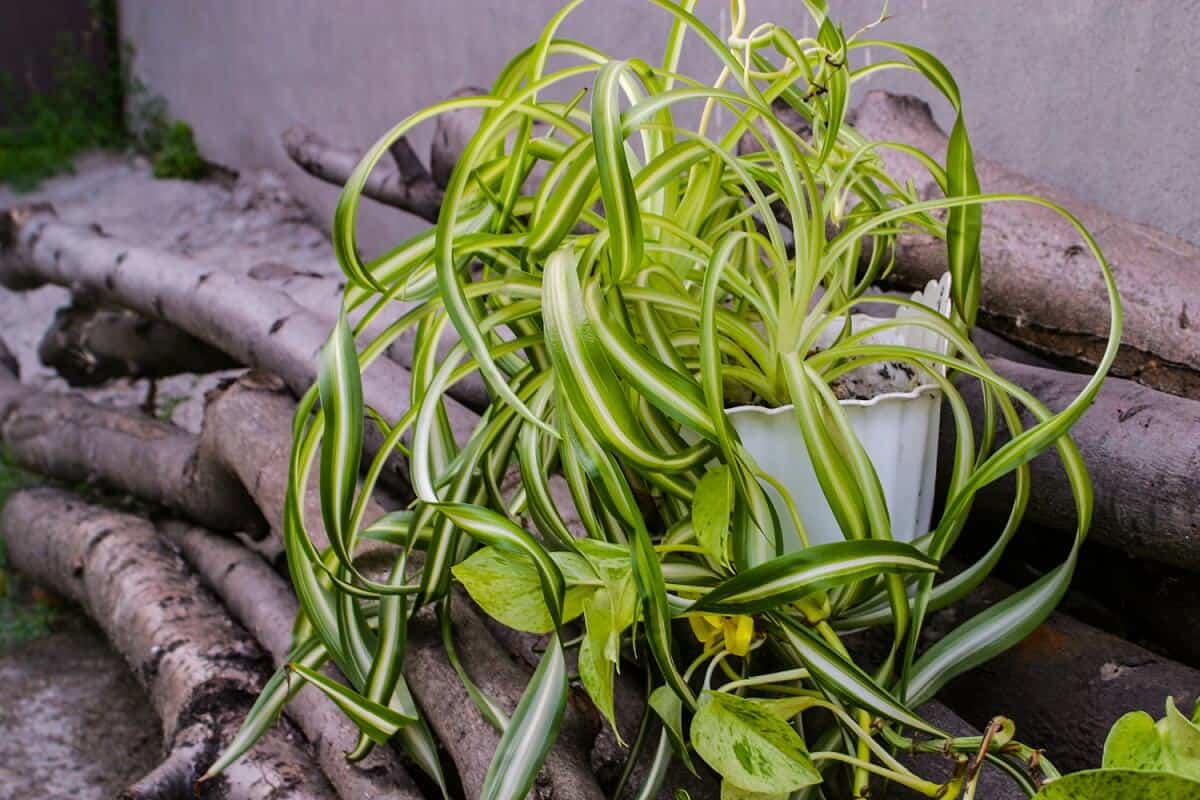Spider plants are popular houseplants, known for their easy, propagation, care, and attractive foliage. With more than 200 varieties of spider plants available, there is something to suit every taste.
From striking variegated leaves to unique colors and shapes, this guide will help you identify the different types of spider plants so you can find the perfect one for your home.
Whether you’re looking for a classic variety or something more unusual, here are 13 types of spider plants that are sure to bring life into your living space.
Types of Spider Plants to Have in Your Plant Collection
1. Milky Way Spider Plant (Chlorophytum comosum ‘Milky Way’)

To start off the list is the lighter and gorgeous 'Milky Way' cultivar. This spider plant variety appears light because it has a broad white-to-cream center with dark green leaf margins.
Besides, in ideal growing conditions, the leaves appear narrow compared to some other cultivars.
2. Ocean Spider Plant (Chlorophytum comosum ‘Ocean’)

As the name implies, this variety has ocean-like foliage with silvery-white stripes. Unlike other spider plant cultivars, this has a rather compact growth.
The leaves are relatively broader with a wide green center and creamy margins. The only drawback is that it tends to grow rather slowly and you'll need some patience to enjoy its beauty.
3. Zebra Plant (Chlorophytum laxum ‘Zebra’)
This is another exotic variety with long, narrow arching leaves and a slender white center. The middle is covered with a shade of green and white-to-cream striped margins that give the foliage an overall zebra-like appearance.
This type of spider plant tends to grow wider than tall. The only challenge you'll have is finding it in the first place since it's quite rare.
4. Green Spider Plant (Chlorophytum Comosum ‘Green’)

This is one of the most breathtaking types of spider plants because of its solid green color. Hence the name 'Green' spider plant.
Its foliage takes on a more upright habit compared to other spider plants and the long, narrow leaves have a slight yellowish tinge at their tips.
It's one of the most adaptable of all other spider plants making it an ideal choice for novice gardeners or those with low-light conditions.
5. Airplane Plant (Chlorophytum comosum ‘Variegatum’)
Among the most popular of all spider plants, this cultivar has amazing variegated foliage with cream-colored stripes running along the center.
The edges have a dark green hue and can appear almost black depending on how much sunlight they receive. As the name implies, its long leaves droop like airplane wings when grown in low light.
6. Variegated Spider Plant (Chlorophytum comosum ‘Variegatum’)

The variegated spider plant is one of the most recognizable types of spider plants due to its unique foliage. The center of each leaf has a creamy-white strip and the edges are green with dark stripes running along them.
The plant can reach up to 24 inches in height and its long leaves tend to droop down, giving it a graceful look.
And, in case you notice brown spots on your variegated spider plant, here's how to fix it.
7. White Stripe (Chlorophytum comosum ‘White Stripe’)
White Stripe is yet another variegated spider plant with foliage that's similar to the Variegatum variety but with a bit more white coloration.
The variety has a narrow white to cream line down the central leaf vein that is lost as the leaf ages. The flower stalks are cream to yellowish instead of the normal green.
8. Hawaiian Spider Plant (Chlorophytum viridescens ‘Hawaiian’)

This cultivar looks like any other variegated spider plant when the plant is young. As the plant grows it becomes interesting!
As the plant matures and the leaves age, the variegation fades. However, the young new leaves remain variegated giving this houseplant a multicolor look.
9. Vittatum (Chlorophytum comosum ‘Vittatum’)
This is one of the most popular spider plants because of its stunning foliage.
It has dark green leaves with a wide, creamy white stripe down the center of each leaf. Vittatum tends to be slower growing than the green types, so, you'll have to be patient with it.
10. Bonnie Spider Plant (Chlorophytum comosum ‘Bonnie’)

Bonnie spider plant is one of the most unique varieties due to its curly leaves which give it a very distinct look.
It has dark green foliage with cream-colored stripes running down the middle. The leaves twist and curl, giving it an exotic appearance.
11. Reverse Variegated (Chlorophytum comosum ‘Reverse Variegatum’)
As the name suggests, its unique leaf pattern appears to be completely reversed from other spider plants, especially the variegated type.
The leaves margin is a pale yellow while the middle is forest green. The foliage takes on an upright habit and looks quite striking when placed in a hanging basket or container.
12. Green Orange Plant (Chlorophytum amaniense ‘Fire Flash’)

The Green Orange is one of the rarest types of spider plants and a great conversation starter. It's adorned with broad dark green leaves like peace lily with finely tapered points and pale pinkish-orange stems and orange midribs.
For this reason, the leaves look almost like fire, hence the name 'Fire Flash'. The plant tends to be slower growing than most other types but it's worth the wait as this cultivar is quite striking.
13. Picturatum Spider Plant (Chlorophytum comosum ‘Picturatum’)
It's the most colorful of all spider plants and very easy to spot with its showy foliage.
The leaves are bright green in color with white or creamy yellow stripes on the edges that resemble a picture frame.
Picturatum is a great addition to any indoor garden and looks especially nice as a hanging basket or container plant.
Conclusion
There are many varieties of spider plants that have unique foliage shapes, sizes, and colors.
Whether you're looking for an exotic-looking specimen for your home or just something to brighten up the corner of your room, spider plants are sure to make a great addition.
Each of these varieties offers something different and will add some much-needed life and vibrancy to any space.
With proper care, each one can thrive for many years indoors. They just need the right environment and attention to reach their full potential!
